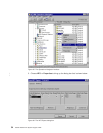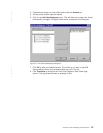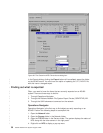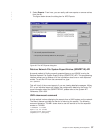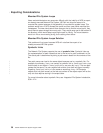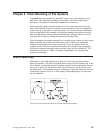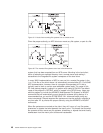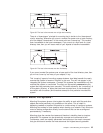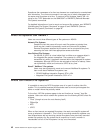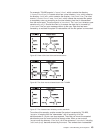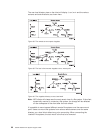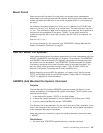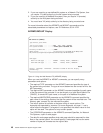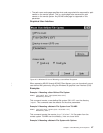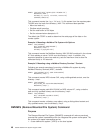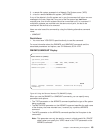
Sometimes the namespace of a client can become too complicated or overwhelmed
with information. The unmount command is an easy way to slowly disengage from
the server one file system at a time. To unmount all file systems, specify the *ALL
value for the TYPE parameter on the UNMOUNT or RMVMFS (Remove Mounted
File System) commands.
For detailed information on how to mount and unmount file systems, see “ADDMFS
(Add Mounted File System) Command” on page 45 and “RMVMFS (Remove
Mounted File System) Command” on page 48.
What File Systems Can I Mount?
Users can mount three different types of file systems on AS/400:
Network File Systems
Despite the fact that users will mount most file systems at startup time,
there may be a need to dynamically mount and unmount file systems.
Remote file systems exported by the server can be mounted at any time,
assuming the local client has appropriate access authorities.
User-Defined File Systems
On AS/400, a UDFS is a local object that is visible as an opaque object in
the integrated file system namespace. The contents of a UDFS are
accessible only when it has been mounted within the integrated file system
namespace. Although UDFSs can be mounted at the time of startup, users
can dynamically mount and unmount a UDFS at any time.
Novell** NetWare** file systems
Users may also dynamically mount and unmount NetWare file systems. To
learn more about NetWare file systems, see
v
OS/400 NetWare Integration Support
, SC41-4124
v
Integrated File System Introduction,
SC41-4711
Where Can I Mount File Systems?
It is possible to mount an NFS file system over all or part of another client file
system. This is possible because the directories used as mount points appear the
same no matter where they actually reside.
To the client, NFS file systems appear to be and function as “normal,” local file
systems. Users can mount network file systems over the following AS/400 client file
systems:
v “Root” (though not over the root directory itself)
v QOpenSys
v NFS
v UDFS
When a client mounts an exported file system, the newly mounted file system will
cover up whatever is beneath it. This is true for mounting remote file systems over
local directories as well as mounting remote file systems over previously-mounted
remote file systems. Any file system that is covered up in such a manner is
inaccessible until all of the file systems “on top” are unmounted.
42 OS/400 Network File System Support V4R4



